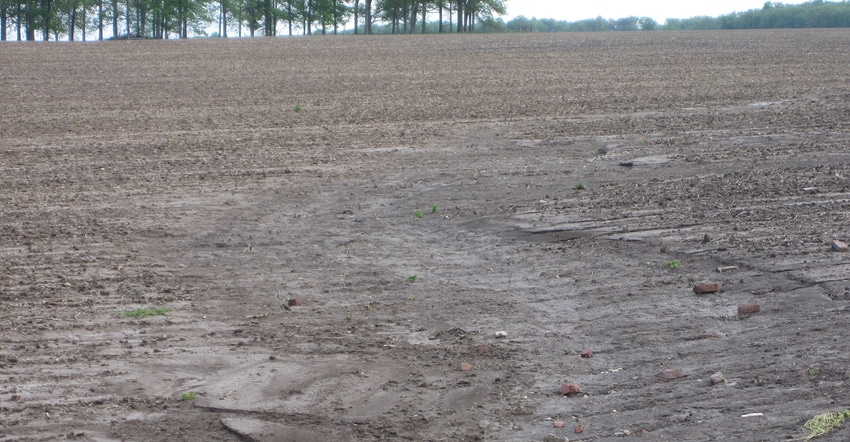
What did the wet part of May teach about soil erosion and cover crops? In areas that received up to 10 inches of rain during the first few days of May, the lesson was pretty obvious. Soil erosion can still be a problem in Indiana where conservation measures aren’t practiced.
This information was prepared by the Indiana Conservation Partnership personnel and other partners, led by a team of Natural Resources Conservation Service personnel, including Don Donovan, Clint Harrison, and Derek Schmitt, district conservationists; Susannah Hinds, grazing specialist; Scot Haley, resource soil scientist; Kris Vance, public affairs specialist; Victor Shelton, state agronomist/grazing specialist; Tony Bailey, state conservation agronomist; and Shannon Zezula, state resource conservationist.
• What they saw. “Many parts of Indiana had a very wet April and May during the 2017 planting season,” Donovan reflects. “There were reports of up to 9 inches of rainfall in a 24-hour period in southern Indiana, and a large section of central Indiana received up to10 inches over a seven-day time period. That’s a lot of rain at once and a lot of rain on already saturated soils.
“For the most part, these rains came as the crop was just planted or, at best, just starting to come up. What did we see, what did we learn, what can we do different?”
Erosion of all types occurred, Donovan says, including some pretty serious gully erosion. That resulted in large areas of sediment deposition and streams and rivers full of sediment-laden runoff.
The sediment contained nutrients, possibly herbicides, and most important, that most-productive layer of topsoil. “What may take years to produce was lost in a matter of hours,” Donovan says. “We also saw large areas of cornstalk accumulation, especially where stalks chopped up by vertical tillage were easily moved.”
• What they learned. Fields that are conventionally tilled can’t stand up to large rains, Donovan says. “We also learned that cornstalks chopped with a vertical-tillage tool are susceptible to being swept away by runoff and accumulating in ditches.
“In long-term continuous no-tilled fields, and especially those that also had cover crops, we didn’t see the stalks moving off-site because they were still anchored into the soil and caught otherwise loose residue.
“On steeper slopes, even no-tilled fields, [but] especially fields that are not continuously no-tilled, we still saw erosion,” he says. “We saw very little erosion in steep fields that had a fall cover crop planted, especially if that cover crop didn’t winter-kill and grew into the spring.”
• What can be done differently. Take a look at your fields — and not just from the truck. Get out in the field with a shovel and do some digging, Donovan advises.
“What does your soil look like after the heavy spring rains?” he asks. “Is there a compaction layer? What is your organic matter level? Is your soil crusted?”
Consider making a change to a system that will build a soil capable of standing up to rain events like what happened this spring by changing to a complete never-till system or introducing cover crops, Donovan suggests. He prefers cover crops that overwinter and provide an armor to protect the most valuable resource on your farm: soil.
“Seek assistance from someone who is experienced in a no-till and cover crop system,” he emphasizes. “Take that step to prevent the damage of spring 2017 from occurring on your farm in the future.”
About the Author(s)
You May Also Like




